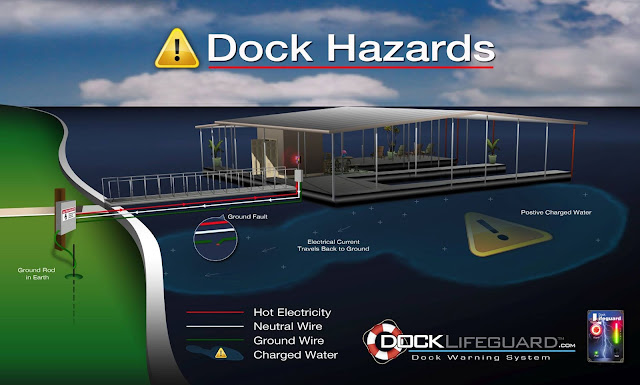United States Court of Appeals, Eleventh Circuit.
AUTO-OWNERS INSURANCE COMPANY, Plaintiff - Appellee, v. RALPH GAGE CONTRACTING INC., et al., Defendants, RICHARD KJELLANDER, KRESLEY KJELLANDER, Defendants - Appellants.
No. 16-15442
Decided: April 17, 2017 Before MARCUS, FAY, and EDMONDSON, Circuit Judges.
In this declaratory judgment action, Richard and Kresley Kjellander appeal the district court's grant of summary judgment in favor of Auto-Owners Insurance Company (“Auto-Owners”). In granting summary judgment, the district court concluded that Auto-Owners owed no duty to defend or to indemnify its insured, Ralph Gage Contracting, Inc. (“Gage”), in the underlying lawsuit filed by the Kjellanders. No reversible error has been shown; we affirm.
In May 2013, the Kjellanders entered a contract to purchase a home, contingent on a satisfactory home inspection. The Kjellanders hired Gage, a licensed home inspector, to perform the inspection. Based on Gage's inspection report -- which identified no major defects -- the Kjellanders proceeded with the purchase of the home. Shortly after closing on the property, however, the Kjellanders discovered several property defects: defects which were not readily observable, but which materially affected the value of the property. These defects included water and mold damage and a faulty HVAC system.
The Kjellanders filed the underlying suit against Gage in Florida state court. They alleged that Gage performed negligently by failing to discover the defects that existed at the time of the home inspection. The Kjellanders said that, if they had known about the defective conditions, they would have exercised their option to cancel the purchase contract instead of closing on the sale of the property. The Kjellanders sought damages of over $1.7 million for repair costs, diminution in value, and for loss of use.
At the time of the inspection, Gage was covered under a Commercial General Liability insurance policy issued by Auto-Owners (“Policy”). The Kjellanders demanded payment under the Policy. Auto-Owners denied the claim, but provided a defense under a reservation of rights. Auto-Owners then filed this declaratory judgment action, seeking a declaration that it owed no duty to defend or to indemnify Gage in the underlying suit. Auto-Owners and the Kjellanders filed cross-motions for summary judgment; the district court granted summary judgment in favor of Auto-Owners.
We review de novo a district court's grant of summary judgment, applying the same legal standards as the district court. Whatley v. CAN Ins. Cos., 189 F.3d 1310, 1313 (11th Cir. 1999). Summary judgment is appropriate when the evidence, viewed in the light most favorable to the nonmoving party, presents no genuine issue of material fact and compels judgment as a matter of law. Holloman v. Mail-Well Corp., 443 F.3d 832, 836-37 (11th Cir. 2006).
We are bound by the substantive law of Florida in deciding this diversity case. See Erie R.R. Co. v. Tompkins, 58 S. Ct. 817 (1938). Under Florida law, an insurer owes a duty to defend its insured “when the complaint alleges facts that fairly and potentially bring the suit within policy coverage.” Jones v. Fla. Ins. Guar. Ass'n, Inc., 908 So. 2d 435, 442-43 (Fla. 2005). “Any doubts regarding the duty to defend must be resolved in favor of the insured.” Id. at 443. If the alleged facts and legal theories asserted in the complaint fall outside a policy's coverage, no duty to defend arises. See, e.g., Chicago Title Ins. Co. v. CV Reit, Inc., 588 So. 2d 1075, 1075-76 (Fla. Dist. Ct. App. 1991). Where there exists no duty to defend, an insurer has no duty to indemnify. Wilshire Ins. Co. v. Poinciana Grocer, Inc., 151 So. 3d 55, 57 (Fla. Dist. Ct. App. 2014).
The interpretation of a provision in an insurance contract is a question of law subject to de novo review. Hegel v. First Liberty Ins. Corp., 778 F.3d 1214, 1219 (11th Cir. 2015). When an insurance policy's language is “clear and unambiguous,” it is construed according to its plain language. Auto-Owners Ins. Co. v. Anderson, 756 So. 2d 29, 33-34 (Fla. 2000). If the policy language is ambiguous, however, the policy is “interpreted liberally in favor of the insured and strictly against the drafter who prepared the policy.” Id. at 34. “[I]n construing insurance policies, courts should read each policy as a whole, endeavoring to give every provision its full meaning and operative effect.” Id. The insured bears the burden of proving that a claim is covered by the insurance policy, and the insurer bears the burden to prove that an exclusion applies. LaFarge Corp. v. Travelers Indem. Co., 118 F.3d 1511, 1516 (11th Cir. 1997).
Under the terms of the Policy, Auto-Owners agreed to pay “sums that the insured becomes legally obligated to pay as damages because of ‘bodily injury’ or ‘property damage’ to which this insurance applies.” In pertinent part,1 the Policy provided coverage for “property damage” only if it was “caused by an ‘occurrence.’ ” The Policy defines “property damage” this way:
a. Physical injury to tangible property, including all resulting loss of use of that property. All such loss of use shall be deemed to occur at the time of the physical injury that caused it; or
b. Loss of use of tangible property that is not physically injured. All such loss of use shall be deemed to occur at the time of the “occurrence” that caused it.
An “occurrence” is defined as “an accident, including continuous or repeated exposure to substantially the same general harmful conditions.” In a case like this one -- where the term “accident” is undefined by the Policy -- the Florida Supreme Court has said that “accident” means “not only ‘accidental events,’ but also damages or injuries that are neither expected nor intended from the viewpoint of the insured.” See State Farm Fire & Cas. Co. v. CTC Dev. Corp., 720 So. 2d 1072, 1072 (Fla. 1998).
The plain language of the Policy requires unambiguously a causal link between the alleged “property damage” and an “occurrence.” Here, the only asserted “occurrence” is Gage's alleged negligent inspection. Thus, to show that their claim is within the Policy's coverage, the Kjellanders must demonstrate that Gage's negligent inspection caused “property damage” within the meaning of the Policy.
That the defects to the property pre-existed Gage's inspection is undisputed. And the Kjellanders do not allege that Gage's negligent inspection in itself caused physical injury to the property. Instead, all physical damage to the property -- including water and mold damage and the faulty HVAC equipment -- resulted from some prior event or series of events.2
The Kjellanders assert, instead, that their loss of use of the property constituted “property damage” under the Policy's second definition. About causation, the Kjellanders contend that, but for Gage's negligent inspection, they would not have purchased the home and would have suffered no loss of use of the property.
Even if we accept that Gage's inspection induced the Kjellanders to purchase the home and, thus, resulted in the Kjellanders' financial losses, that argument fails to establish coverage under the Policy. The alleged “property damage” itself -- the loss of use -- was caused by the pre-existing property defects, not by Gage's failure to discover those defects. Indeed, the property defects would have inevitably led to the loss of use of the property whether Gage had conducted an inspection or not. That it was the Kjellanders -- and not some other homeowner -- that ultimately experienced that loss of use does nothing to prove the requisite causal connection between Gage's negligence and the “property damage” for purposes of establishing coverage under the Policy.
Because the Kjellanders have failed to establish a causal connection between an occurrence -- Gage's negligence -- and the alleged property damage, they have failed to satisfy their burden of demonstrating coverage under the Policy. Thus, the district court concluded correctly -- as a matter of Florida law -- that Auto-Owners owed Gage no duty to defend or to indemnify in the underlying state court action.3
AFFIRMED.
FOOTNOTES
1. The Policy requires that the property damage be caused by an “occurrence” that took place in the “coverage territory,” that the property damage occurred during the policy period, and that the insured lacked knowledge of the damage before the policy period. The issues of coverage territory, policy period, and the insured's prior knowledge are not in dispute.
2. Nothing evidences -- and the Kjellanders do not contend -- that these prior events occurred during the pertinent policy period. Thus, these prior events themselves can serve as no basis for coverage under the Policy.
3. Notwithstanding their failure to establish causation, the Kjellanders also contend that an exclusionary clause -- added after the pertinent events in this case and which excluded expressly coverage for property damage resulting from inspections -- evidences that coverage in fact existed under the original policy for damages arising from Gage's home inspection. We reject this argument. Florida law makes clear that “exclusionary clauses cannot be relied upon to create coverage.” See CTC Dev. Corp., 720 So. 2d at 1075. More important, however, under Florida law we construe the Policy according to its plain meaning and interpret the Policy as a whole. Anderson, 756 So. 2d at 33-34. Because the Policy at issue in this appeal contains no inspection endorsement, we will not consider the language of the later-added endorsement in construing the Policy.We also reject the Kjellanders' public-policy-based argument that the Policy must be construed to provide coverage for a negligent home inspection, given Florida Statute § 468.8322 -- which requires home inspectors to maintain insurance coverage. That Gage failed to obtain the appropriate insurance coverage as required by Florida law does not render the terms of the Policy invalid as contrary to public policy or Florida statute.
 Industrial, environmental, product liability and financial lines claims in excess of US$1 billion – based on a 2015 Aon study that identified 86 corporate liability losses of that amount – “are more commonplace and are no longer confined to just the U.S. and Europe,” notes Global Claims Review: Liability in Focus – Loss trends and emerging risks for businesses.
Industrial, environmental, product liability and financial lines claims in excess of US$1 billion – based on a 2015 Aon study that identified 86 corporate liability losses of that amount – “are more commonplace and are no longer confined to just the U.S. and Europe,” notes Global Claims Review: Liability in Focus – Loss trends and emerging risks for businesses. 































